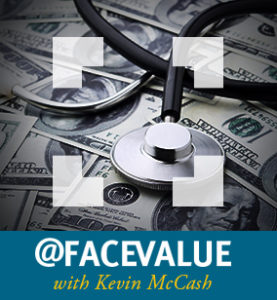If You Teach Someone To Fish…


I am fairly certain that everyone has heard the old saying that goes something like Give someone a fish and they will eat for a day, but teach him or her to fish and they will eat for a lifetime. It’s a valuable idiom that translates to a lot of different areas. Leadership, coaching, government, and teaching are just a few examples. I am not, however, here to talk about any of those areas even though it might be interesting to branch out a bit.
I am here, as always, to talk about Value-Based Healthcare and more specifically an interesting trend that can be seen across the industry. It seems that the major insurance companies have moved beyond the mandates of Congress and CMS and have started defining their own paths toward full value-based programs.
As a prime example UnitedHealthcare Group, the country’s largest medical insurance company, reached a benchmark of $64 billion in reimbursements for value-based programs in 2017. That accounts for about 60% of their total medical payment amount. This is part of a well-known initiative by UnitedHealthcare to reach $75 million in value-based payments by 2020. Other large companies, such as Aetna (now a part of CVS Health), Anthem, and Cigna, all have similar goals and increasing payments towards value-based programs. In general, the trend is always up. It seems that these companies have realized that public opinion matters, not to mention cost-savings for them (meaning more profits) and a growing provider base that is much more open to being paid on a quality scale rather than a volume scale.
That being said there is a somewhat negative side to these initiatives that is derived completely from the business side of healthcare payers. Insurance payers perceive a threat to their financial wellbeing when it comes to value-based care as a result of the consolidation of hospital systems and the alliances between private provider practices. Collective hospital organizations comprised of emergency departments, primary care practices, specialized practices, laboratory services, imaging clinics, physical therapy practices, surgery centers, and any number of other healthcare clinics, practices, and services are the ideal situation when it comes to patient-centered quality-based care. These collective entities would be able to view, share and control the care of an individual at all levels ensuring that the best outcome is found for each and every condition on a person-by-person basis.
The issue for insurance payers is that these entities would be able to subsist and set payment rates much higher than less centralized systems as they could better guarantee the outcomes for an insurance payer’s member population. In general this is not a bad thing for patients but less than ideal for the companies that are reimbursing providers for services rendered. As a consequence insurance payers are making every effort to align themselves with physician alliances, hospital networks, and other cooperative entities early so as to ensure a good working relationship later on. The payers are also beginning a practice of acquiring private practices of all kinds in order to circumvent the necessity for contract negotiations that end unfavorably for the companies themselves.
While this might seem to be foreboding and ominous I do not necessarily believe that it is. In the end the result would be the same and perhaps costs will reduce even further if the companies doing the insuring are also providing the care. The most important thing is that the eventual goal is achieved insomuch that patient outcomes and quality of care is of the utmost importance and care is determined not by payment but the result. This is the path ahead and it might not always be shiny and perfect but it is better than continuing down the route previously set. Payers have taken the reins in many regards and are making some strides towards realizing a far reaching and seemingly impossible goal. In the end, unforced and independent action is the best we can hope for. In this case, it seems that popular opinion and government action have shown payers how to fish. Now we will have to see if they will eat for a lifetime.







